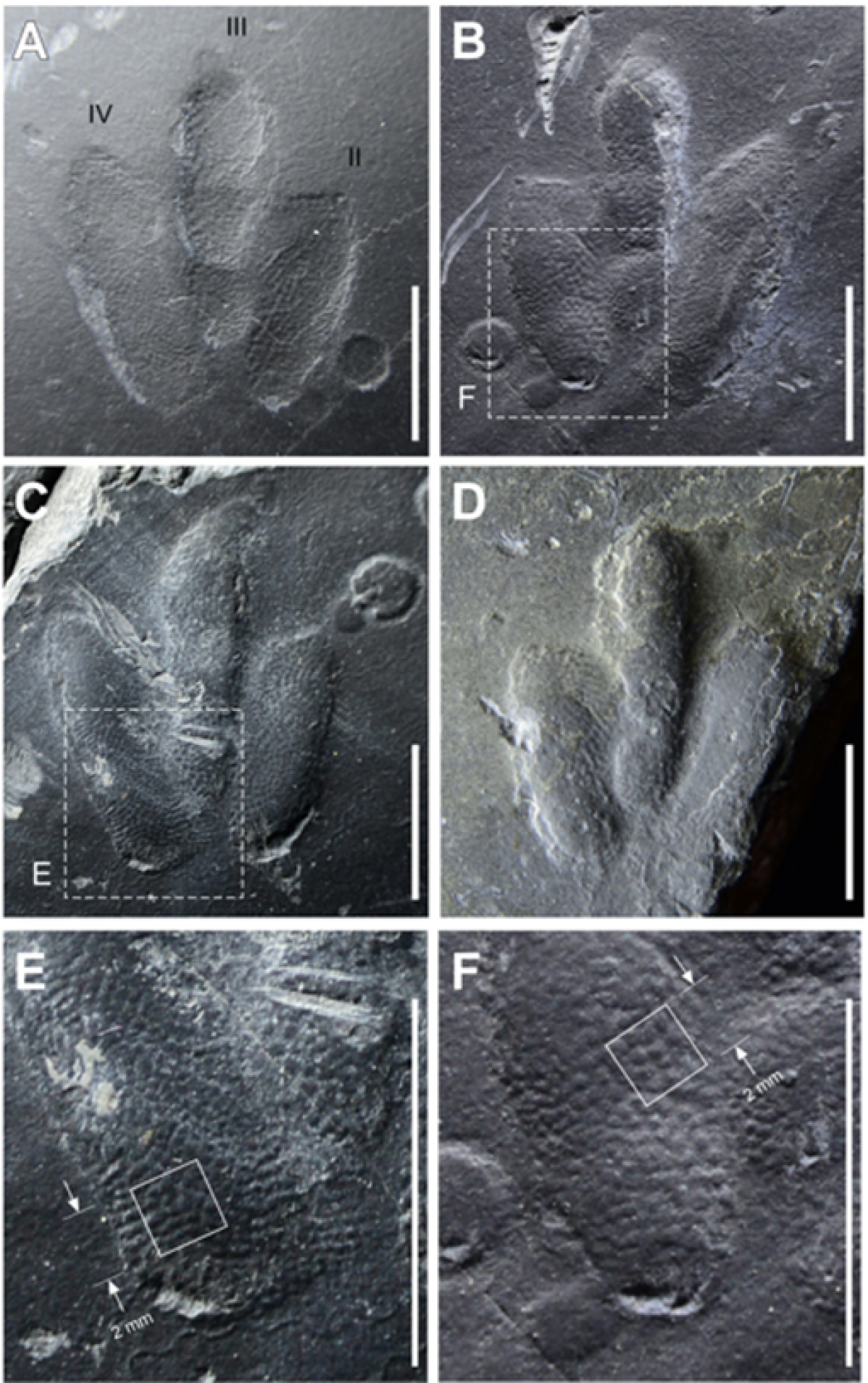
Researchers have uncovered dinosaur skin traces inside a set of one-inch-long footprints near Jinju—a city in South Korea.
Finding well-preserved dinosaur soft tissue, such as skin and bones, is a rare occurrence. In fact, far less than one percent of dinosaur tracks contain any kind of skin traces.
Nevertheless, an international team, led by Kyung-Soo Kim from Chinju National University of Education in South Korea, say the skin traces they found are "exquisitely preserved," according to a study published in the journal Scientific Reports.
"We were very surprised by the quality of preservation, especially in such small tracks," Martin Lockley, another author of the study from the University of Colorado, told Newsweek. "Dinosaur skin traces have been found here and there over the years. However, we should distinguish between traces of skin from the body of animals buried during fossilization and the traces of skin made by living animals while walking or running."
"Before the present discovery, no track, no matter how large, had ever revealed more than a few patches of skin impressions," he said. "Simply put, these are the first tracks to show skin impressions over the entire footprint surface. Moreover, all five of the tracks we found showed complete coverage with skin traces."
According to the researchers, the skin traces are around 100 million years old and represent a small carnivorous dinosaur known as Minisauripus, which was about the size of a blackbird.
"The traces are very similar to the few bird fossils with skin traces on their feet from this time period," Lockley said. "It is interesting that the now well-known bird fossils from this period—mostly from China—have feathers over most of the body but not on the feet, like modern birds. So this tells us that these small carnivorous dinosaurs were very similar to birds."
Lockley said that the tracks were made on a very thin layer of fine mud—almost like a "coat of fresh paint" only a millimeter thick. When the dinosaur stepped on this sticky surface, the texture of its skin was reproduced perfectly, and the marks were preserved by being gradually covered in more fine mud over a long period of time.
The researchers say that the preserved skin has a similar texture to medium grade sandpaper, featuring an array of tiny scales—each of which measures only about a third or a half of a millimeter in diameter. These miniature scales bear a striking resemblance to the skin seen on the feet of rare mummified feathered birds found in China.
"Going forward we continue to look at exquisitely preserved tracks because they help us understand the living animals, including their soft tissues, skin, scales, feathers etc, which are normally preserved," Lockley said.

Uncommon Knowledge
Newsweek is committed to challenging conventional wisdom and finding connections in the search for common ground.
Newsweek is committed to challenging conventional wisdom and finding connections in the search for common ground.
About the writer
Aristos is a Newsweek science reporter with the London, U.K., bureau. He reports on science and health topics, including; animal, ... Read more
To read how Newsweek uses AI as a newsroom tool, Click here.








